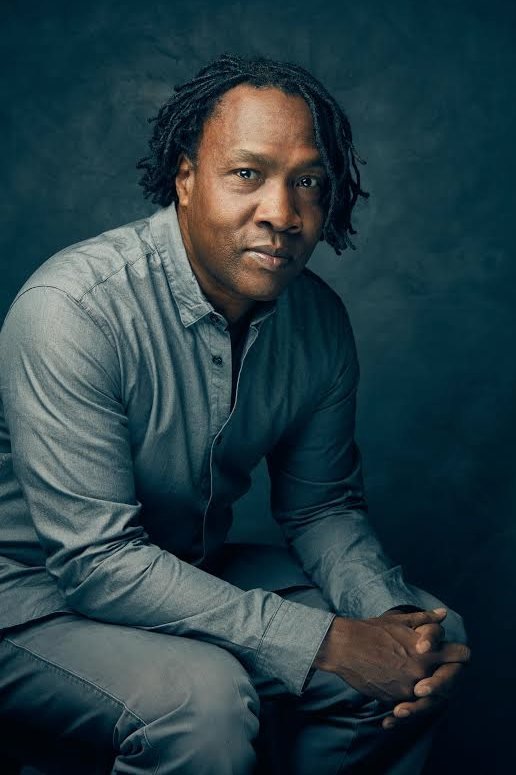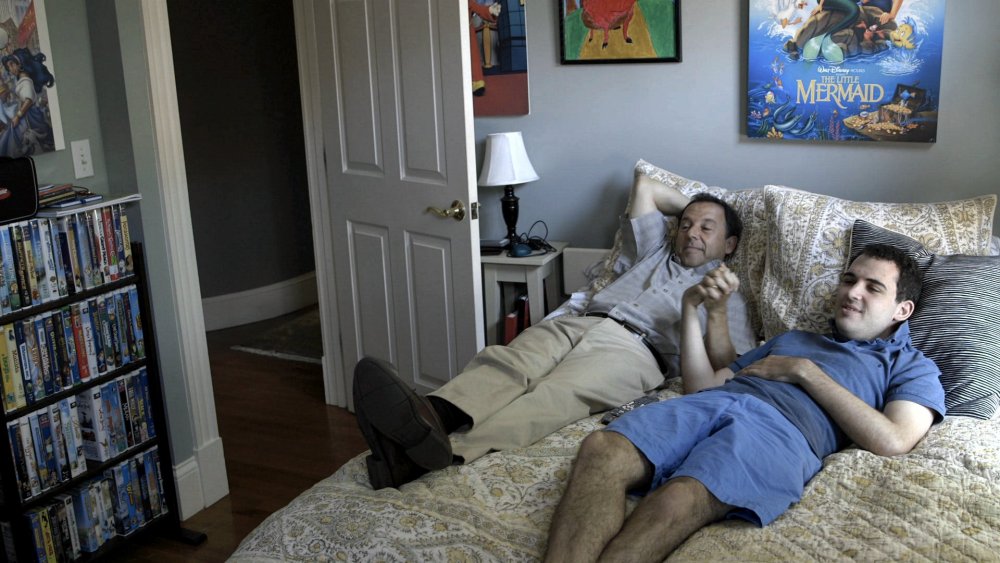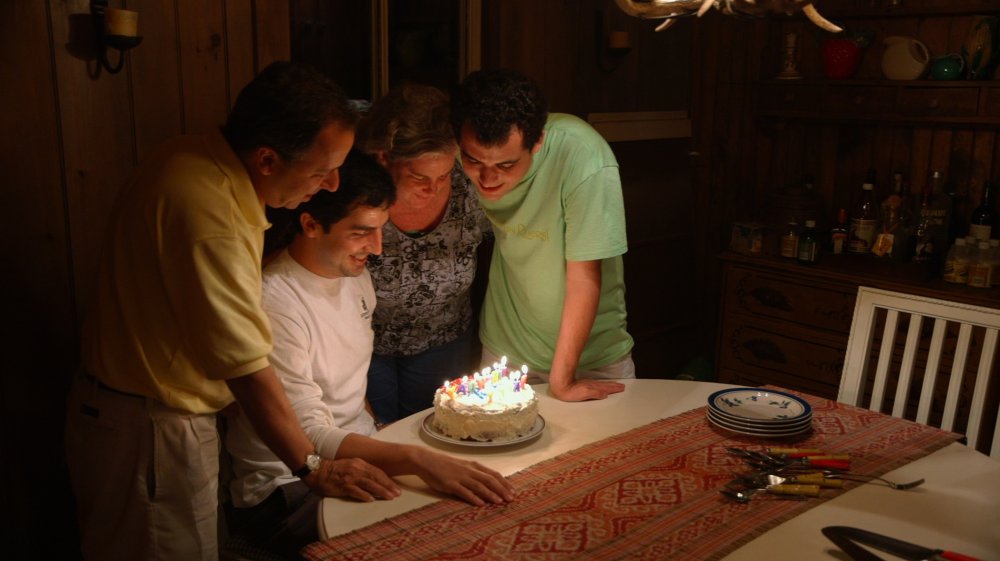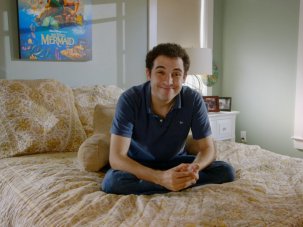Web exclusive

Roger Ross Williams
It was the Oscar that Roger Ross Williams won in 2009 for his short documentary Music by Prudence which ensured the generous backing to make Life, Animated, his feature documentary about Owen Suskind, a young autistic man with a passion for Disney animation. A year filming, a year in the cutting room, lavish clips from Disney classics, its own animated sequences hand-drawn by a team of ten artists in France, sound design by George Lucas’s top team at Skywalker – it’s not surprising that Williams still can’t believe his good fortune. “It was a dream opportunity; I was in heaven.” Just as the film opened in London last week after winning numerous awards in the States, Williams heard that Life, Animated had been shortlisted by the Academy for Best Documentary.
Life, Animated is now in cinemas and on VoD.
Williams had met Owen because he had worked with his journalist father Ron Suskind when they were both at ABC’s Nightline. But he didn’t know him well or understand autism. “I was operating from a place of ignorance initially,” he says – but like Owen, Williams knew what it was to feel like an outsider. The director was raised by a single mother in impoverished Pennsylvania and is gay, black and dyslexic. His great passion from his teens was for telling stories, and despite his literacy struggles he got into NYU on a full scholarship and then moved into television journalism and documentaries.
In 2014 Ron Suskind wrote a book describing how his son Owen lost all speech and was diagnosed with autism at the age of three, but learnt to communicate again through obsessively watching Disney films. Williams won the rights to turn it into a documentary – and the amazing budget that he still doesn’t want to name but which he hints is in six figures.
“I spent three weeks with the book’s galleys, wondering how to make a documentary that was all set in the past,” he says. “Just working with talking heads, home-movie footage and film clips could be really boring. I also really wanted Owen to tell the story himself. All too often in films about people with disabilities, the narrative gets taken away from them. It becomes about someone else trying to help them or counsel them. And Owen wouldn’t work as a traditional interview because he wouldn’t make eye contact and it’s really hard to keep him focused.”
They tried interviewing him first in a studio, with lights and make-up and a green screen that Williams was going to use for animations and graphics. But Owen was stilted, looking to his parents for prompts, and the studio made him anxious.

Life, Animated (2016)
Williams wanted Owen to talk though his life, and explain how he was feeling rather than have it mediated. He hit upon using the Interrotron, made famous by Errol Morris in The Thin Blue Line, wherein the interviewer talks into one camera and his face appears on a teleprompter screen in front of a second camera placed in front of the interviewee. They set up in Owen’s bedroom at home, with Williams in the next room. “When Owen first saw me on the screen he was mesmerised; he’s spent his whole life looking at screens, and he went completely still. He stared at me. He could completely focus and connect because I was on that screen.”
They filmed that key interview over three days and Williams also used the Interrotron to show Owen home videos from when he was little. He asked what it was like when he was first hit with autism. “Owen said, ‘It was like I didn’t understand anything anyone said anymore.’” Williams made a reel of key Disney scenes that Owen had drawn on to make sense of his world. “We played in a clip from The Hunchback of Notre Dame and talked about when Owen was being badly bullied at school, and he was so poetic, he would say, ‘I walked the halls of fear.’”
Williams not only used Owen’s words, but his own hand-drawn character animations. The young autistic man had written and illustrated a 2,000 word quasi-autobiographical screenplay entitled The Land of the Lost Sidekicks. Williams took it to the French visual effects company Mac Guff (responsible for Despicable Me, Minions and The Lorax) and a team of ten turned his script into a hand-drawn animation. Williams recalls, ‘It was so exciting seeing them draw a little Owen and create such very detailed work, I was almost in tears,” Williams recalls.

Life, Animated (2016)
The edit was very complex with five different layers of story – the interviews, the Disney clips, The Land of the Lost Sidekicks animation, the home movies and hundreds of hours of verité footage. Williams followed Owen over a transitional year; he left home to live in assisted accommodation, looked for a job and split up with his first girlfriend.
It wasn’t straightforward, as Williams remembers: “Owen lives in his own head. He would ignore the camera and sound guys. He has no filter, he never wonders what other people think of him or how they feel, he’s never acting. He wouldn’t ever let me do retakes – I’d say, ‘Owen I didn’t get the shot of you walking through the door, can you do it again?’ and he would say, ‘Why? I already walked through it!’ So we had to be rolling all the time, get everything in one take. We spent weeks with Owen, and the only time he broke the fourth wall was when his girlfriend finished with him. It was so painful for him and we would have real heart to hearts for days, but I didn’t want to put myself in the film, it would have been a distraction.”
Williams also removed another distraction – sequences shot exploring scientific research into autism involving filming in Switzerland as Owen had his brain scanned under fMRI and his vision tracked while he watched Disney clips. There were complex graphics explaining neurology, and 3D visuals taking us through the human brain. It all hit the cutting room floor. “The film used to open with this beautiful sequence of neurons firing and amazing music, and those images were there again at all the transitions, as if we were getting deeper and deeper into Owen’s brain. We were all in love with these sequences, but we realised that it made it look like a science documentary. It was a real case of ‘kill your darlings’, and we took it all out and just left the human story and it worked. I was so lucky to have the time to go through that process.”
Williams wants to share his luck. “I will always make films that champion outsiders, because I still feel like one, even though I’m now governor of the documentary branch of the Academy. I can’t believe that I’m sitting in meetings with Steven Spielberg, Tom Hanks and Annette Benning. I want to take on that responsibility to represent all the Rogers out there who don’t have a seat at the table. People of colour were not at the table, and now I am there I want to change things.”
His next film will take him back to his hometown to spend time with his teenage friends and peers, many of whom ended up in prison. Next time he’ll put himself in the picture and it’ll be interesting to see if he gets the same generous budget for a film with no Disney clips and probably no happy ending.
-
The Digital Edition and Archive quick link
Log in here to your digital edition and archive subscription, take a look at the packages on offer and buy a subscription.





